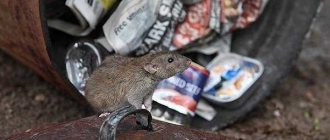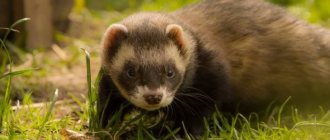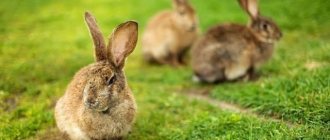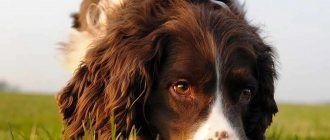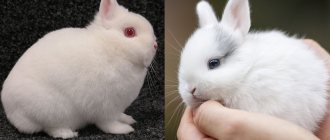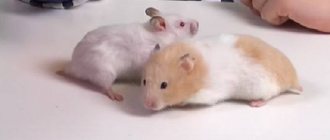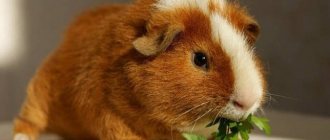The common house (house) mouse belongs to the most widespread species of mammals on the planet, the order of rodents. Due to its attachment to humans, the mouse is distributed on all continents, with the exception of the hot desert territories of Africa and South America, the permafrost of Antarctica, the northern parts of Eurasia and North America. But how long mice live depends on their living conditions and climate.
Interesting!
Such a large population of the house mouse is due to its high fertility and omnivorous nature. But, unlike a rat, a small rodent cannot adapt to a sudden change in environment and does not have strong immunity to toxic substances that people love to poison mice with.
Varieties and names
If you have the intention of keeping a small rodent at home, information about what types of mice there are and how to properly keep them will be useful for you. These animals are very popular among breeders. They have bred a huge number of species of mice and we have plenty to choose from.
Types of mice by hair type
- Short-haired mice have smooth, dense and short fur with a natural shine.
- Satin mouse - has satin wool, with a special, bright shine due to the hollow hairs that reflect light.
- The Rex mouse has wavy fur with thick curls distributed throughout the body.
- Abyssinian Rosette Mouse - has at least one rosette on each side of the body. These rosettes have a clearly visible center point and a smooth, rounded shape. Such a mouse can have short or long fur.
- Angora - has a long, even coat with a smooth texture throughout the body.
- Texel - has long wavy fur of the same length.
- A hairless mouse is a completely hairless, hairless creature with wrinkled skin.
- Fuzz feather mice have a soft and dense "afro" curl that resembles the wool of a small lamb.
Decorative rex
mouse Miniature mice are usually distinguished not only by the type of fur, but also by color.
The following colors are especially popular:
- Solid - all hairs of the coat are the same color. The coloring should be consistent throughout the entire body, including the skin, ears, nails, tail and belly.
- Tan - the mouse has one main color, on which there are red spots.
- Fox - the mouse has a basic color with white markings on it.
- Marked - there are spots and areas of color on the pet’s fur that create a certain pattern.
- Mixed - characterized by a special pigmentation of the fur, and each hair alternates with dark and light stripes.
A variegated color is quite common, when colored inclusions are located on a main white background.
Some types of mice that are especially popular
- Micromys minutus. Juveniles have a dull, chestnut coat color. After the first molt, the animals acquire a fiery red color.
- Japanese dwarf mouse. The white fur is decorated with chaotically scattered black spots. These spots are quite individual, and each mouse takes on its own interesting and unusual shape.
- Needle mouse. It’s very funny how this mouse looks: on its back there are long hairs that look like needles, red-brown or black-red in color.
- African striped mouse. This mouse has alternating light and dark stripes along the entire length of its body.
- Gerbil mouse. The color of gerbils is yellow-sand with a black admixture in the form of individual hairs.
- White mouse.
White rex mouse
Diseases
As a rule, the cause of the disease is improper care or genetic predisposition. If there is any suspicious change in your rodent's behavior, you should contact your veterinarian. Obvious signs of illness:
- Changes in the shape of teeth, their unequal length.
- Poor appetite.
- Low activity.
- Eye or nasal discharge.
- Diarrhea.
- Weight loss.
- Change in skin texture.
If your mouse is sick, take it to the vet immediately
How long do mice live at home?
The lifespan of mice is not very long - usually 1.5-3 years. In impeccable conditions of detention - a maximum of 5 years.
Keeping in mind the average period of how long a house mouse lives, let's think about expanding its time frame. To do this you need:
- provide the pet with the most comfortable living conditions;
- balance the diet and bring it as close as possible to the needs of a small organism;
- protect the animal from domestic predatory pets;
- monitor the health status of your pet, which directly depends on the conditions of detention, cleanliness and the intake of nutrients into the body.
Follow these recommendations, and your mice will be very lively, active and healthy.
Without water
A rodent does not always have the opportunity to be near a water source. In the wild, mice obtain fluid from succulent herbaceous plants. It is easy to find water for it inside houses. But a pet left in a cage without water is not able to live for more than three days.
The little mice, until they become independent, and this happens only after three weeks, are completely dependent on their mother . Therefore, if the nurse rodent is not with its offspring for at least half a day, it will die.
What does it eat?
Domestic mice are rodents, and the basis of their diet should be grains (wheat, millet, barley, rye, etc.). You can also give fruits, berries, vegetables and seeds of wild plants. You can offer your pets sunflower seeds and crackers as treats, but only in small quantities.
Wheat
When thinking through the diet, it is necessary to take into account that mice need to be given additional vitamin and mineral supplements.
You can also feed your pet ready-made food, which contains all the necessary ingredients for a balanced diet.
It is necessary to provide the rodent with branches of garden trees or birch trees for grinding down teeth. Even if you give your pet succulent food, make sure that there is always clean drinking water in the drinking bowl. The domestic white mouse especially needs liquid: even one day spent without water will seriously affect the pet’s well-being.
Lifestyle
In summer and spring, field mice are active in the evening and at night. In autumn and winter they can be active during the day. They do not hibernate.
How mice and voles overwinter:
- Natural shelters or earthen passages can be used as burrows.
- Their burrows reach 3-4 m in length and have 2-4 exits, one of which leads to a watering hole.
- Dwellings must have a nesting chamber and 2-3 pantries in which winter supplies are stored.
- The storerooms are located at a depth of 0.5-1 m.
IMPORTANT! Rodents that live in swampy areas do not dig burrows. They build nests. The main material is grass. Such dwellings are usually located on tall bushes.
How much does a mouse weigh?
At birth, pups weigh 1-2g, body length 3cm. On days 4-5 after birth, their weight doubles. After weaning, the animals grow quite quickly, and at the age of one month their weight is 11-12 g. Mice are approximately 6-10cm long. Weight and linear parameters in mice finally stabilize at 6 - 7 months. By this time they weigh approximately 25-30g. The body weight of adult mice can vary depending on nutrition and housing conditions. The maximum weight of the mouse is 50g.
Distribution of animals
This representative of the fauna is widespread in Europe. Animals can also be found in China, Mongolia, Denmark, Finland, Korea, and Taiwan. In the Russian Federation, the rodent is distributed in Primorye, Siberia, and the Urals. Often settles on the hills, climbs low into the mountains.
Found near the Black and Azov Seas. Does not like deserted forest-steppes and continuous forests. It takes root well in moist interfluves .
It prefers overgrown meadows with small depressions, collective farm fields, sunny edges of deciduous forests and, of course, vegetable gardens. It can be found in greenhouses, greenhouses, cellars, barns, abandoned utility sheds and even in residential premises.
IMPORTANT! With the onset of autumn, rodents move into stacks, haystacks, and stacks of straw.
How many mice does a mouse give birth to?
Like all small rodents, mice have increased fertility. If mice are kept in good conditions and given good nutrition, they can breed throughout the year. A mouse can bear an average of 5-10 litters per year. In one litter, as a rule, there are from 1 to 15 mice.
Mice are born without hair, their eyes and ears are closed. They are helpless and hardly move. On days 3-5 after birth, the baby mice's ears open and fur begins to grow. Mice's eyes open at the age of two weeks. And at three weeks of age, the pups get out of the nest and begin to consume food on their own. Young animals can be separated from the female 3-3.5 weeks after birth.
Interesting facts about the rodent:
- House mice have poor eyesight but very acute hearing. They are capable of perceiving sound with a frequency of up to 100 kHz (the upper threshold of human hearing sensitivity is 20 kHz). In dimly lit places they navigate using vibrissae. A keen sense of smell helps mice in finding food, orienting themselves in space, and recognizing their relatives.
- The house mouse's harm to humans consists of eating grain crops, contaminating food and animal feed with feces and urine, damaging furniture, electrical wiring, clothing, and books. The fight against house mice was one of the reasons for the domestication of cats by humans. In addition, house mice carry many infections dangerous to humans, for example, pseudotuberculosis, vesicular rickettsiosis, leptospirosis, tularemia, and plague.
- At the same time, house mice also bring benefits to humans, since they are bred as domestic and laboratory animals, “food” animals for terrariums. Mice are used in preclinical research as experimental animals and model organisms due to their ability to reproduce rapidly.
- In 2013, a monument to a laboratory mouse was erected in Novosibirsk as recognition of the role of the rodent in genetics and experimental medicine (see photo).
Domestic decorative rats - the best breeds
The ancestor of the domestic rat is considered to be the gray rat - pasyuk. In the process of adapting to home conditions, the rodent's physique, color, temperament and attitude towards humans changed. The lifespan of a rodent is 3-6 years, depending on the conditions of detention and care.
Decorative rats of the standard breed
The standard is the most common breed among domestic rats. The rodent is quite large, with an elongated body and short shiny fur.
- A distinctive feature of the breed is considered to be a body size of 24-26 cm and a tail of 20-25 cm;
- The eyes are round and harmonize with the coat color. The ears are wide and round in shape;
- rat weight: from 200 to 500 g, depending on gender and feeding and maintenance conditions.
Rats of this breed become attached to their owner and, even when treated rudely, do not behave aggressively, do not attack or bite.
Rex
In terms of body type, rexes are similar to the standard breed, however, they have dense curly hair, which is not particularly glossy and soft.
- the mustache is short and curled at the tips, the skin is dull;
- size 7-20 cm, weight 200-500 g;
- the color is standard colors, the spots sometimes merge due to the unevenness of the hairline.
Pets love to play with their owners, and not just be nearby. They prefer to be the center of attention, so they are easy to train. They adapt to the owner’s daily routine and do not interfere at night.
Double Rex breed
Double Rex is an improved version of the previous breed. The only difference is the double hairline characteristic of rodents. The coat is short, and the fur is constantly twisted in a spiral; even fur is present on the abdomen.
Rats shed more often than others and require additional care for their fur.
Tailless rats
From the name it becomes clear that the rat does not even have the rudiment of a tail. The body of the rodent is pear-shaped, the head is larger than that of the Standard. The bigger the ears, the better.
- have different colors in any color scheme, complete absence of hair is allowed;
- size 20-25 cm, weight 200-500 g.
Rats are very smart and playful, but they need time to get used to a new home, so for the first couple of days they will be wary of the home. Sometimes there is a problem with breeding offspring, and the babies born are not always tailless.
Satin decorative rats
Satin or satin rats have a standard build and come in a variety of colors.
- the main advantage of the breed is its wool: thin and long, soft to the touch, with a characteristic shine;
- size 8-25 cm, weight 350-800 g.
Would you like a rat with smooth satin fur? Poll Options are limited because JavaScript is disabled in your browser.
Pets are cunning, but they are not vindictive. Unlike other breeds, satin rats are unpretentious and like to hide in furniture, so keep a close eye on the rodent when it walks around the apartment.
Breed of hairless rats
Rats are completely hairless. Small fuzz is found in the area above the eyes, on the wrists and ankles. The skin is bright, without spots or blemishes. Folds are allowed. The skin of males is thicker than that of females and is pleasant to the touch.
- adult size 15-30 cm, weight from 300 to 700 g;
- life span: 1.5 - 2 years, but favorable conditions will prolong the baby’s life.
Animals are clean, so they do not cause inconvenience when walking around the apartment. Suitable for people prone to allergies.
Dumbo breed
The Dumbo breed, like tailless rats, was bred artificially, so the rodents have a pear-shaped physique. Unlike other rats, Dumbo's head is wider and its muzzle looks more pointed.
- the main difference from its relatives is its large, low-set ears;
- size 15-20 cm, weight 250-500 g;
- There are two ear shapes: open and “tulip”, when the edge is slightly lowered down.
Like other breeds, Dumbo quickly gets used to its owner and loves to lie on laps and sit on shoulders. They quickly get used to the tray and keep it clean.
Downy breed of decorative rats or Fuzz rats
The Fuzz rat got its name from its thin, matted gray fur that shows through the body of the rodent. The antennae are short and not evenly spaced; the fluff on the head creates the feeling as if the pet is bald.
Wavy or corduroy varieties of ornamental rats
Wavy rats completely repeat the characteristics of the Standard breed, differing only in the protruding hairs.
- The fur of corduroy rats is wavy, thick, dense, slightly tousled;
- undercoat is present. The mustache is long with small waves at the ends;
- size 15-20 cm, weight 300-500 g.
How to fight spiders using traditional methods
Folk remedies and methods will help in the fight against spiders if the case is not advanced. The simplest method, as noted above, is to get rid of the food source of arthropods: cockroaches, midges, mosquitoes and other insects. You shouldn’t feel sorry for the cobwebs woven by predators in the corners of the house. It is better to clean it with a damp cloth, taking the spiders along with it.
In a private house, with an abundance of vegetation under the windows and in the yard, it makes sense to use boric acid in the fight against spiders. A special effect can be achieved by combining acid with a vacuum cleaner, which can easily remove all spiders, including those from hard-to-reach places.
It is believed that spiders do not like the aroma of citrus fruits, chestnuts and hazelnuts. If you place particles of products with odors they hate around the house, especially in places where they accumulate, you can achieve a deterrent effect.
Not the easiest, but effective method is home renovation. Spiders cannot stand the smell of paint, whitewash, or putty. Replacing the floor and wallpaper followed by general cleaning will get rid of arthropods for a long time and help refresh the interior.
Another folk remedy against domestic arthropods is mint. Even a small amount of a fragrant plant placed in the corners of the house will scare away spiders. You can enhance the effect with the help of peppermint aromatic oil, sprayed through a spray bottle around the house in spider habitats. The same effect can be achieved using eucalyptus or tea tree oil.

